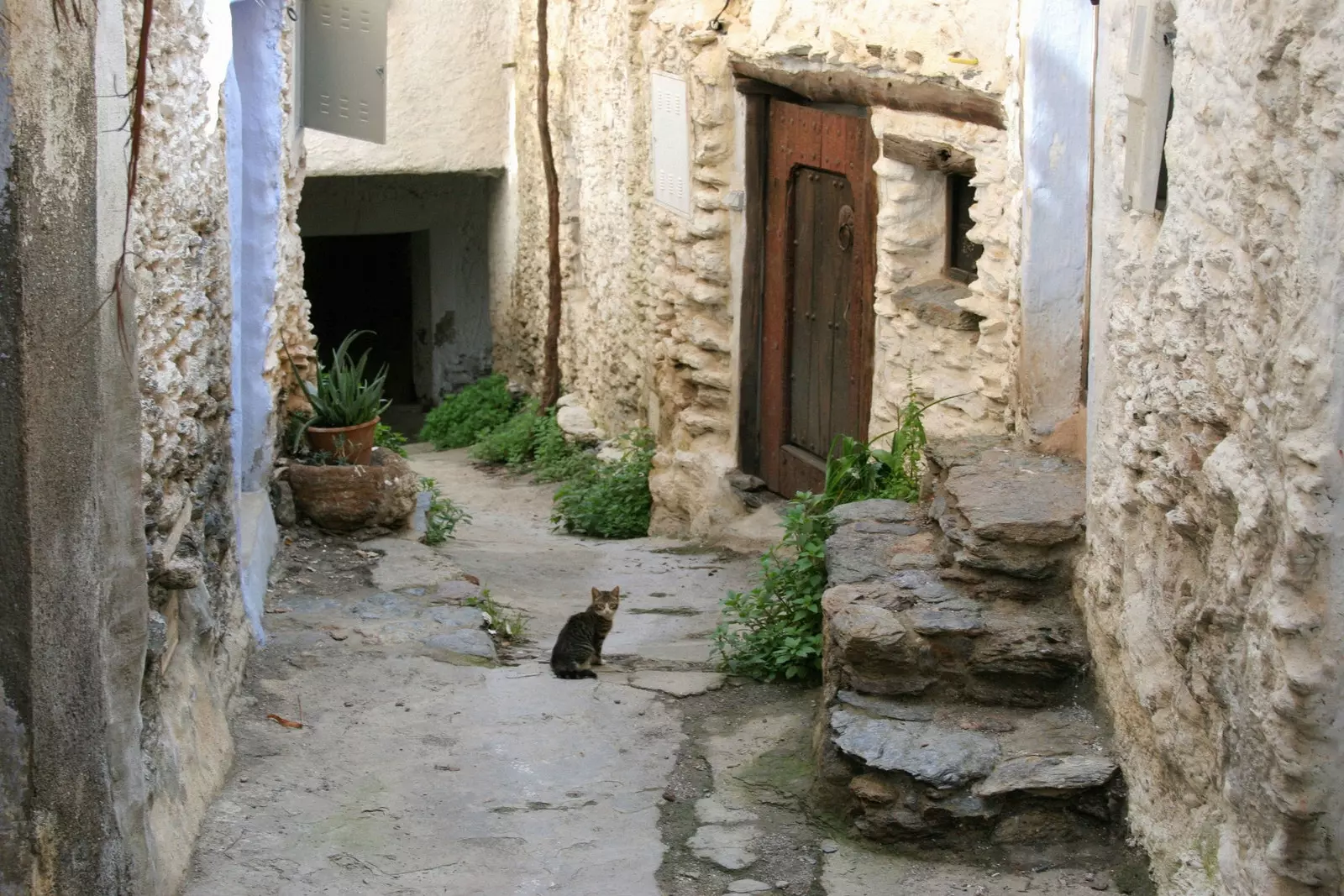
May the end of the world catch us in La Taha
It dawns and we wake up to the murmur of the water that flows through the channels of the surrounding alleys. The warm rays of spring pass through the window glass. The hangover from the fire that comforted so much last night ends up being consumed in the fireplace . Meanwhile, the song of the birds is loud outside. In here, a blanket, a book: peace.
Few situations better describe the feeling and living of a land, the Alpujarra of Granada, where stillness acquires another dimension. This region is located in a privileged place, between the white peaks of Sierra Nevada and the intense blue of the Mediterranean , in a territory without borders, free, full of magic.
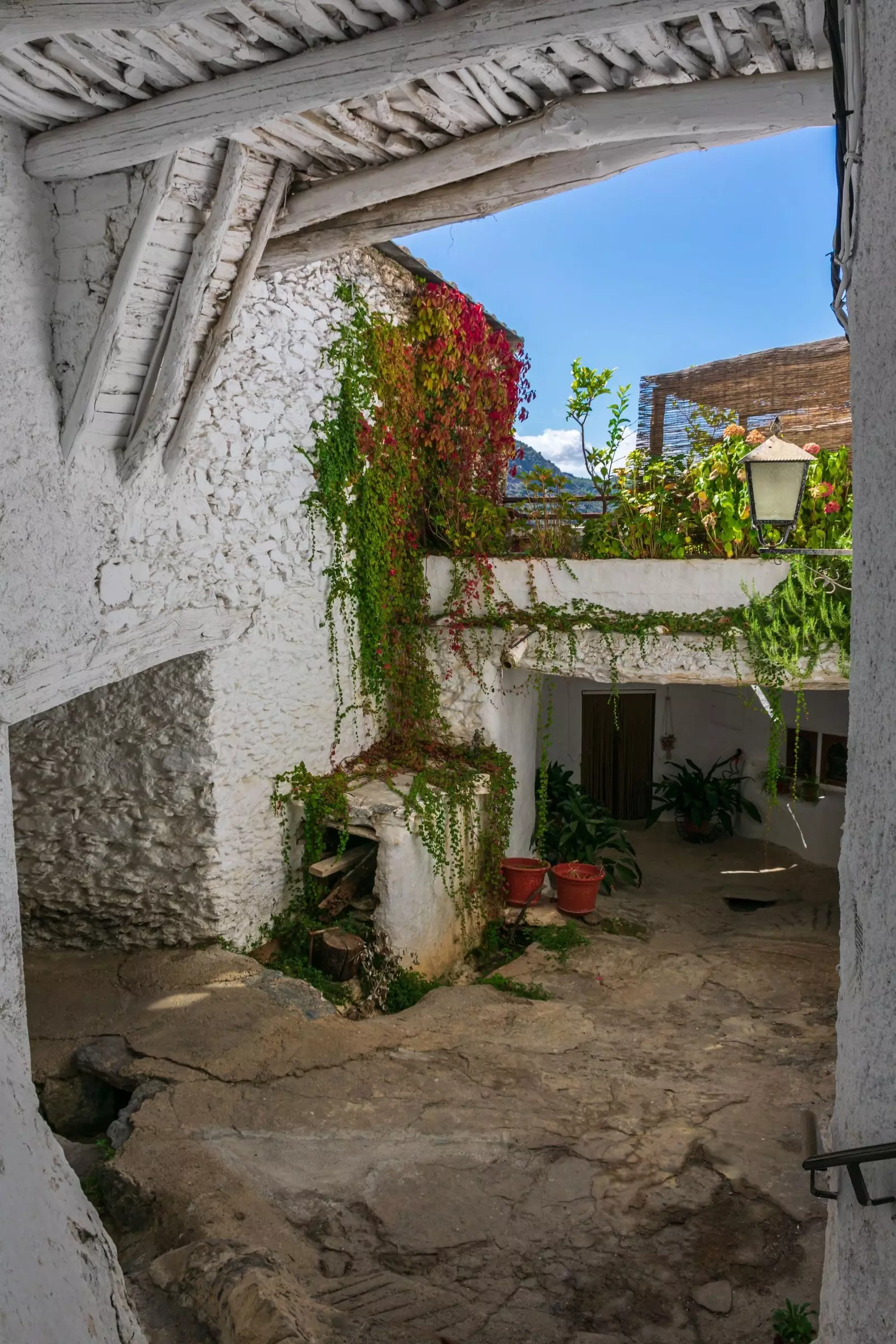
Atalbeitar
A remote place to which we come —we come— to disconnect. Even to reconnect —why not— with ourselves. And we do it after dodging curves and more curves that twist in the embrace of prodigious mountains. Willing for time to pass much more slowly and determined to visit the seven population centers that make up the municipality of La Taha, neighbor of the great stars of the place - Pampaneria, Bubión and Capileira do not need introductions—.
In this little piece of the Alpujarra divided between the Trevélez and Poqueira rivers, life stretches little by little and we, from atalbéitar , we start our day ready to enjoy whatever comes our way. For example? Let's explore the environment, which never hurts.
Atalbéitar account with just 30 registered inhabitants —although we can attest that, living there, some fewer do so— to those who are hardly listened to. Because silence is perhaps the most surprising thing about this town , probably the one that best preserves the heritage of that Arab past so present in these parts. Here we face for the first time those concepts related to the most traditional architecture, the same that will accompany us throughout the trip: the tinaos —roofs built over some streets with which the houses gain space—, stylish Alpujarra chimneys and terraces — flat, waterproof roofs covered with launa — wait around every corner. On every street.
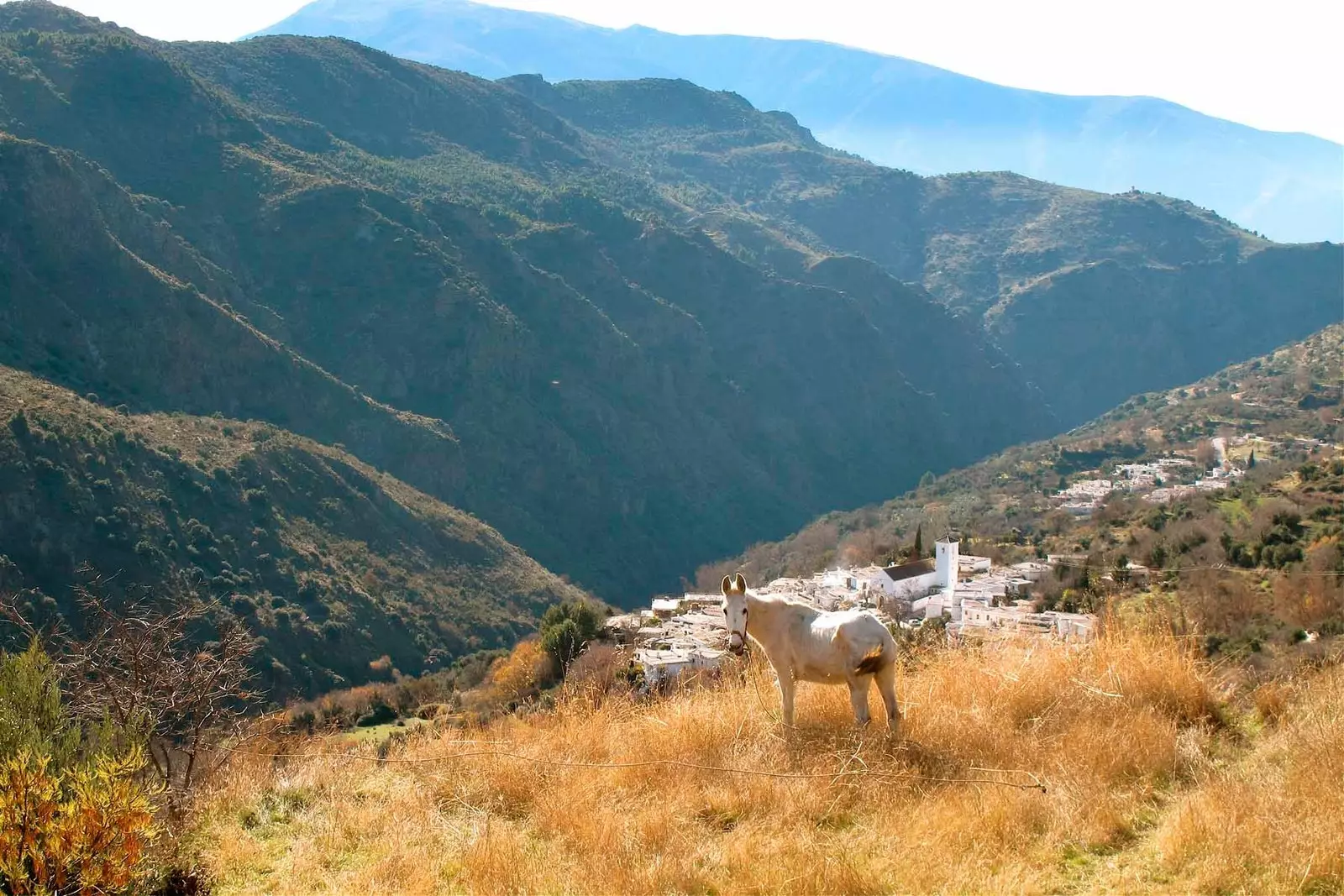
Cars don't come here
And that, in Atalbéitar, the urban layout is made up of only a handful of roads along which not even cars have space to circulate. What a pleasure to go through them getting lost on purpose, walking with ancient vines and bougainvillea , photographing doors guarded by colorful jarapas. It doesn't matter which direction we take, because we will always end up in the charming square where the Atalbéitar Fountain —another one, we will see them everywhere— makes the coldest water ever tasted sprout from its whitewashed walls.
Wherever the town ends, the orchards of the premises full of fruit and vegetables, poplars and ash trees start. Horses that graze peacefully, chickens that flutter around the land and a path that emerges and goes into the thickness of the Alpujarra landscape inviting you to explore.
There are many marked routes for hiking in the area that lead to waterfalls and rivers, ravines and ditches and even other towns. For example, to Ferreiola , which name -" small iron mine ”- honors what many of the surrounding towns lived on until not so long ago. In the neighboring streams, the reddish tone on their banks reveals that something remains of that history.
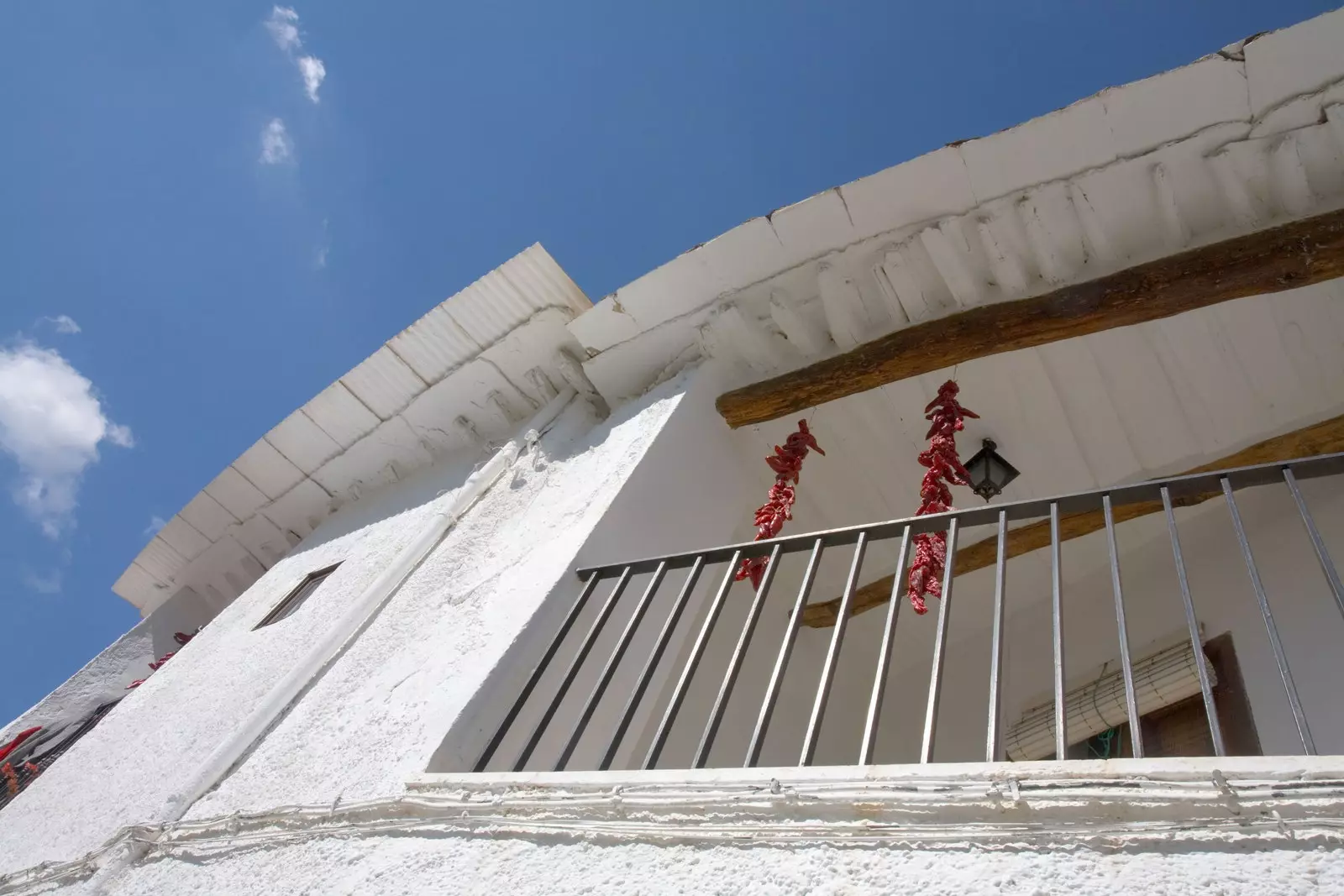
Drying peppers in Ferreiola
On the route we cross claims that make the journey more enjoyable, such as the remains of an old mosque or the popular Fuente de la Gaseosa. From afar, you can already see the center of his hamlet, gleaming white, where its barely 80 inhabitants live and where rises the tower of the Church of the Holy Cross, from the 18th century.
Very close, Fundales, Mecinilla and Mecina they once formed a single nucleus, although today it is divided into three. They are also part of the Taha and they can be reached, if we want to continue walking, on an attractive walk from Ferreiola: like the entire region, we are in the Sierra Nevada Natural Park , hence the most splendid nature becomes mistress of the landscape.
We reach the first one —Fondales comes from “bottom” because it is in the lowest area of La Taha— after crossing The roman bridge that crosses the Trevelez River , which is estimated to have been built between the 11th and 12th centuries, when the Arabs still dominated the area. That was a time of such economic strength that a flour mill was even built next to it, remains of which still remain today.
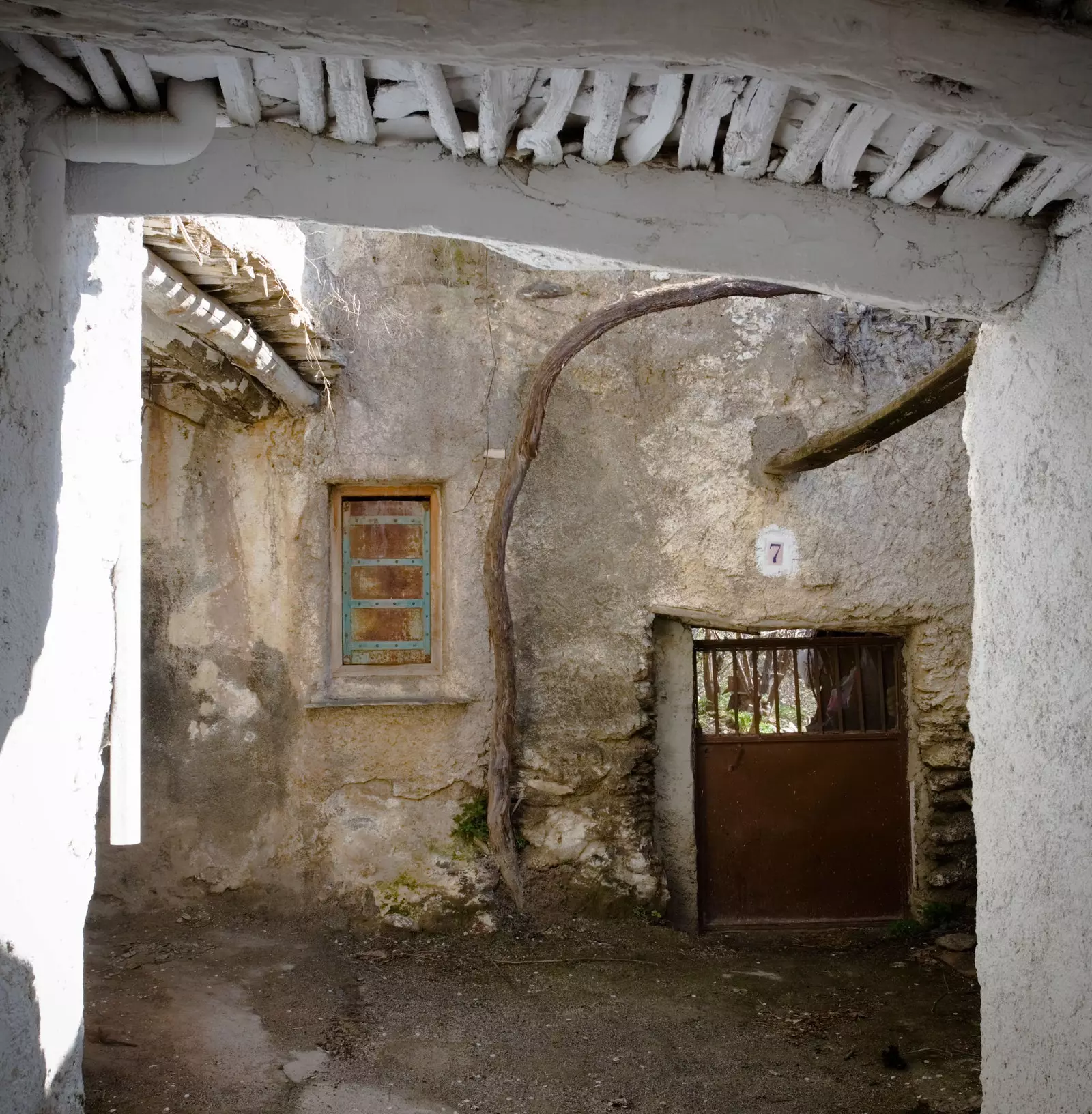
foundations
We walk through its few alleys and steep slopes, perfectly adapted to the broken terrain, while we continue drinking from the essence of the most traditional Alpujarra . The enea chairs wait at the door of their houses for their scarce 50 inhabitants to hurry up enjoy the ray of sunshine on duty.
Meanwhile, more tinaos and more terraos fill the picture. From its unique chimneys comes that smell of fire, of the warmth of home, which we already associate so much with this corner of the world. . A small room in one of its streets serves as a hermitage: in it the corresponding festivities in honor of the Virgen del Rosario.
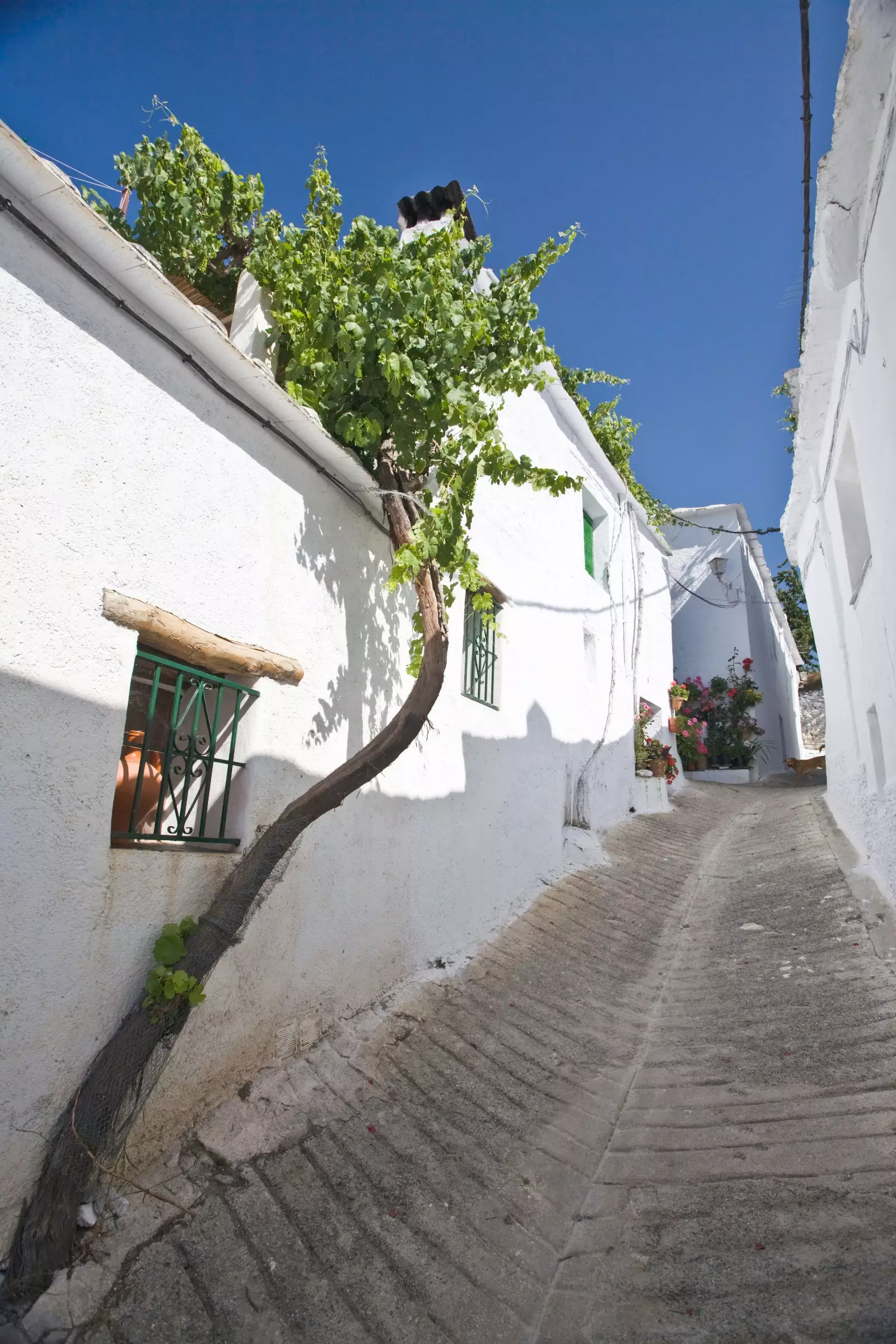
Mecinilla
It doesn't take long to get to Mecinilla , which although it was built following Alpujarra guidelines, is much more recent. In fact, it was born as the wealthy neighborhood of Mecina, one of the most populated centers of La Taha . We advance under the protection of its ancient facades, which witnessed distant times. Between passageways, alleys and galleries we come across the old laundry room and the church, built on the old mosque. In the building of what was once the school, today is the Center for Studies of Sierra Nevada and the Alpujarra , a cultural space where workshops, exhibitions and conferences take place.
If it arises —and of course it will arise—, you can stop to gather strength in El Aljibe-El Barranquillo, one of the most authentic bars . In its terrace, breathing the pure air of the Alpujarra , we can treat ourselves to the feast we deserve or simply perk up with a little cap of Trevélez ham before giving one of the last pushes: it's time to go up to Pitres.
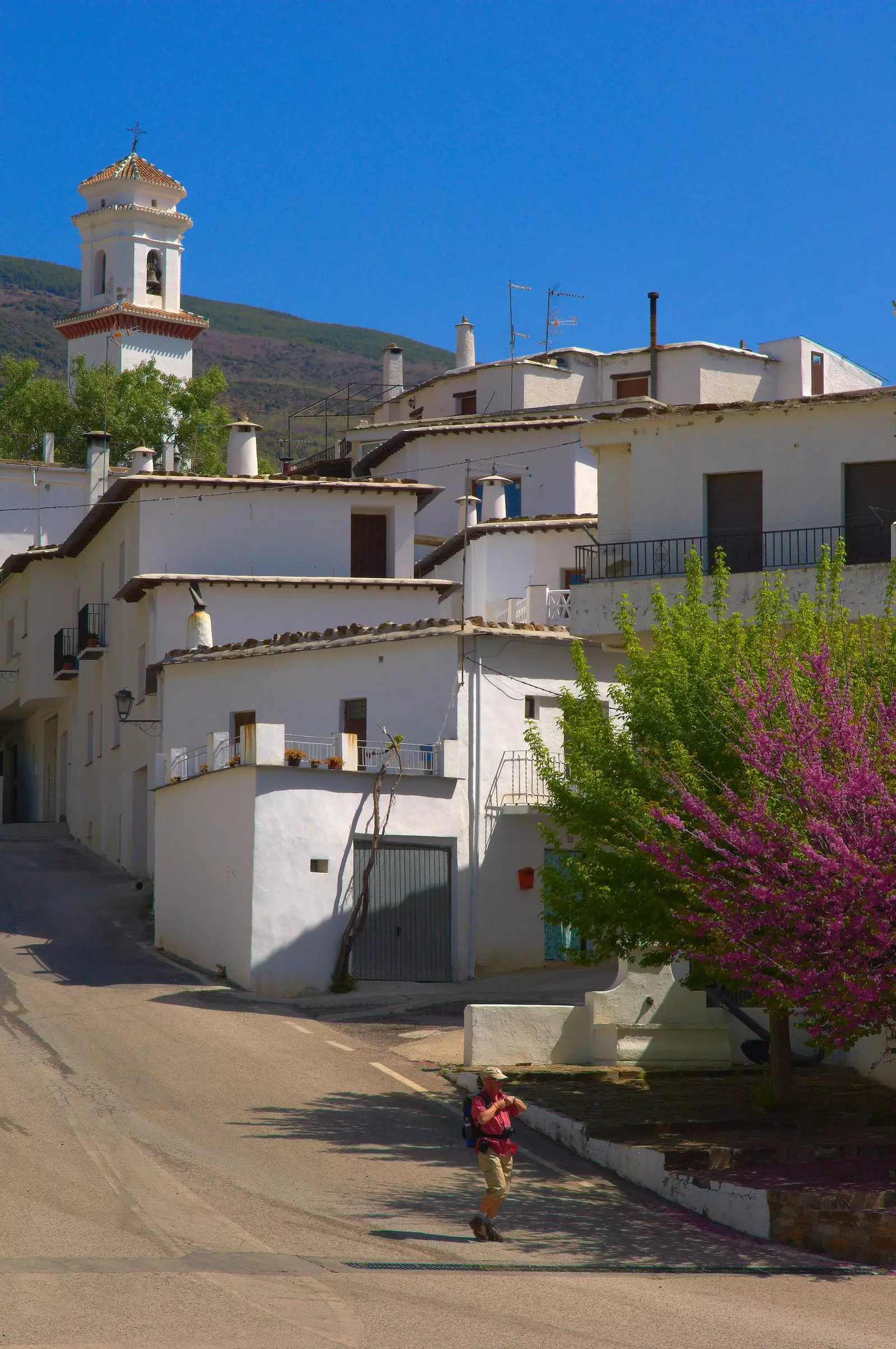
Pitres
The capital of La Taha It rises several tens of meters higher, on the side of the mountain, and concentrates most of the municipality's public services in its urban fabric. Located next to Bermejo River We will climb the stairs that lead to his Calle Real , flanked by arcades on which houses with the typical Alpujarra structure rise, all of them rebuilt in the 1940s after being razed in the Civil War. With its vines climbing the white walls and its latticed balconies, it is not surprising that it is one of the favorite enclaves of those who visit it.
And here life does make itself known. We come across neighbors with the purchase hanging from their arms and they form huddles here and there. The taverns, largely prepared for tourism , offer tapas made from local produce. We decided to walk the alleys paying attention to every detail: in that cat that takes a relaxed nap in the shade, in the colored pots that decorate that porch. Even in the fascinating cobblestone streets that lead us to get lost in the Barrio Alto, Hondillo or the Virgin.
To finish off the visit, we went through the old Plaza de Armas , a huge esplanade where the town hall, the health center and the church meet, built on the foundations —of course— of the old mosque: its tower is one of the most distinctive features of Pitres. In The Garden of the Mirador and again in front of the panoramic view of the Alpujarra , things get serious: in the menu they announce that they serve the typical Alpujarreño dish, so who said fear? Black pudding, chorizo, ham, poor potatoes, peppers and eggs make us enjoy to the fullest without any remorse: because we deserve it.
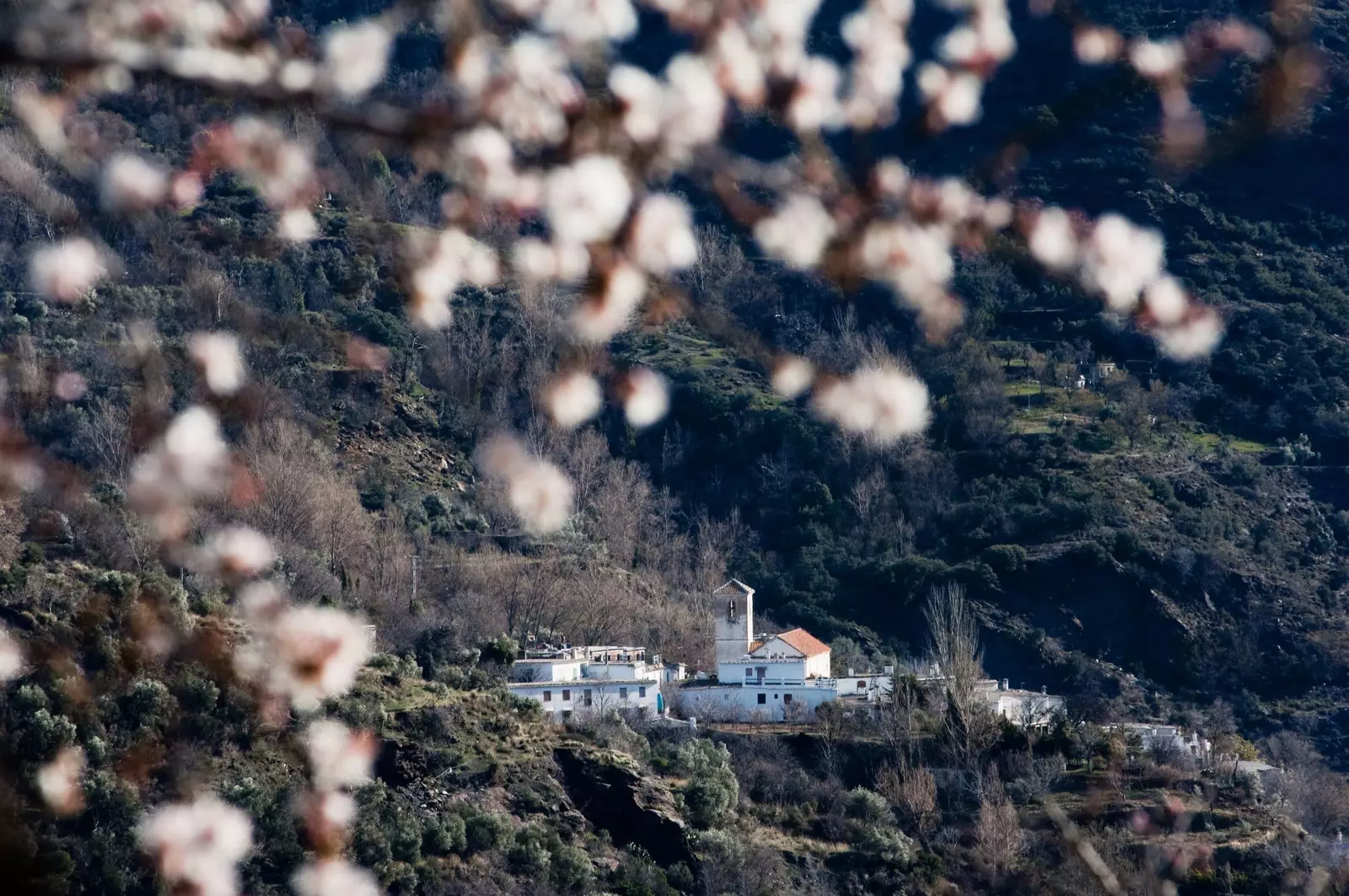
Ferreiola
And because - everything has to be said - the ascent to chapel , the highest of all the towns that make up La Taha, brings it to you: we need energy. Once up there between two ravines and more than 1,400 meters high , we will discover the details that make it another beautiful town in the Alpujarra.
And they will be, without a doubt, their tinaos and terraos, their jarapas hung from any window, the images of their beautiful chimneys with the landscape of The Taha in the background and its mountain environment, those that put the climax to the route.
A trip to this territory without borders, full of history and nature, where tranquility is the true queen. So why not: if the end of the world comes, let it catch us here. In the Taha.
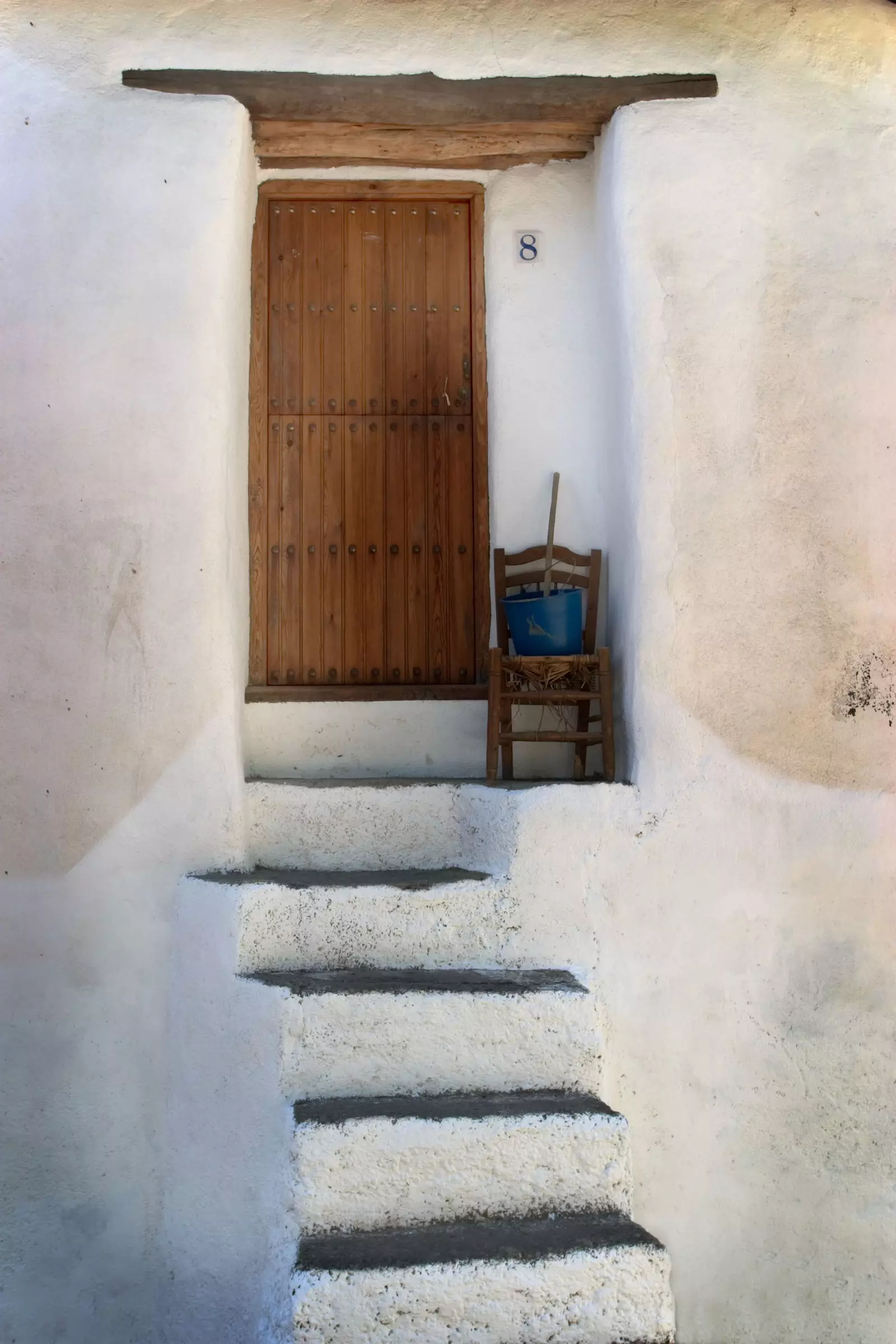
Mecina, in La Taha
